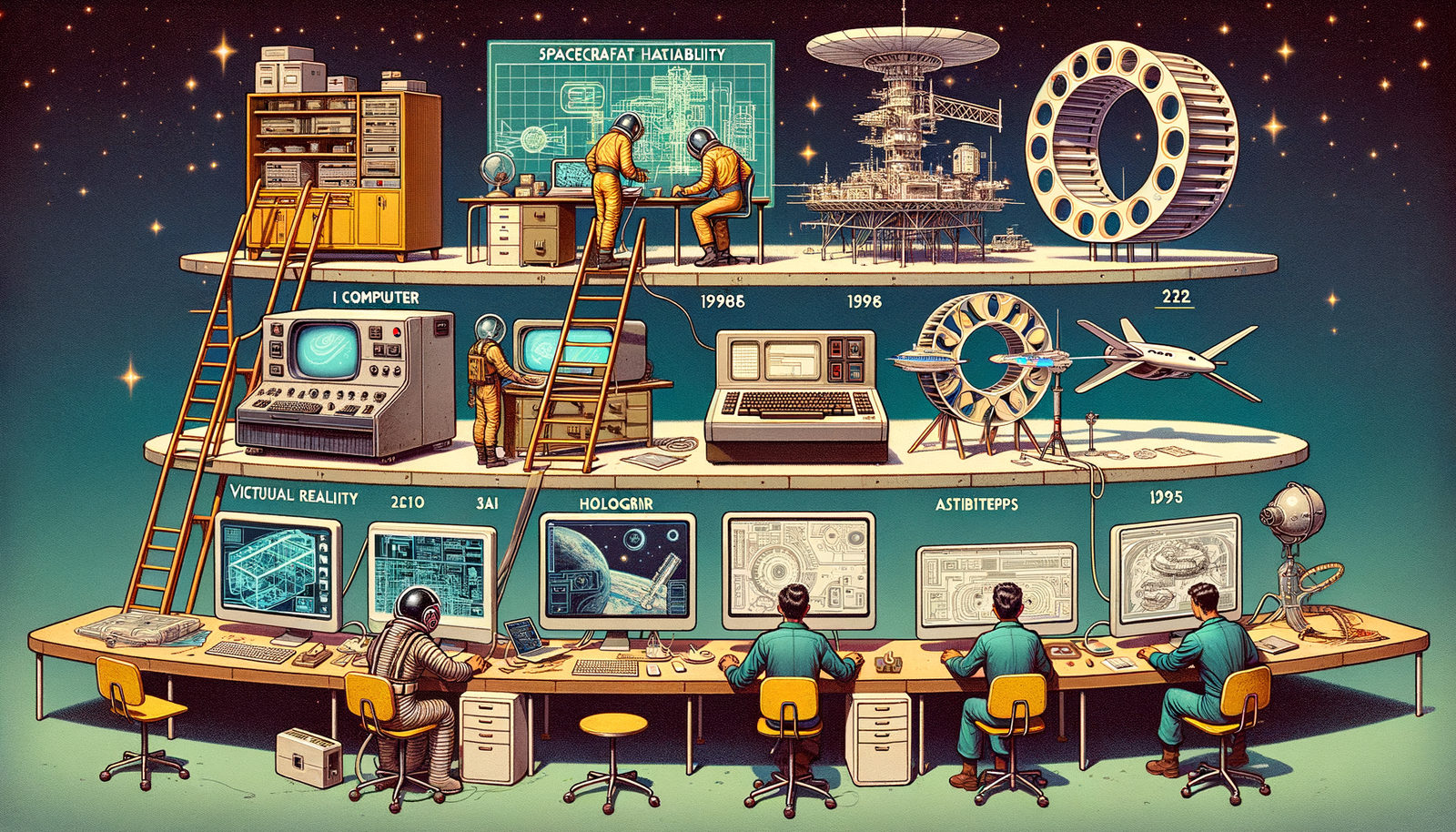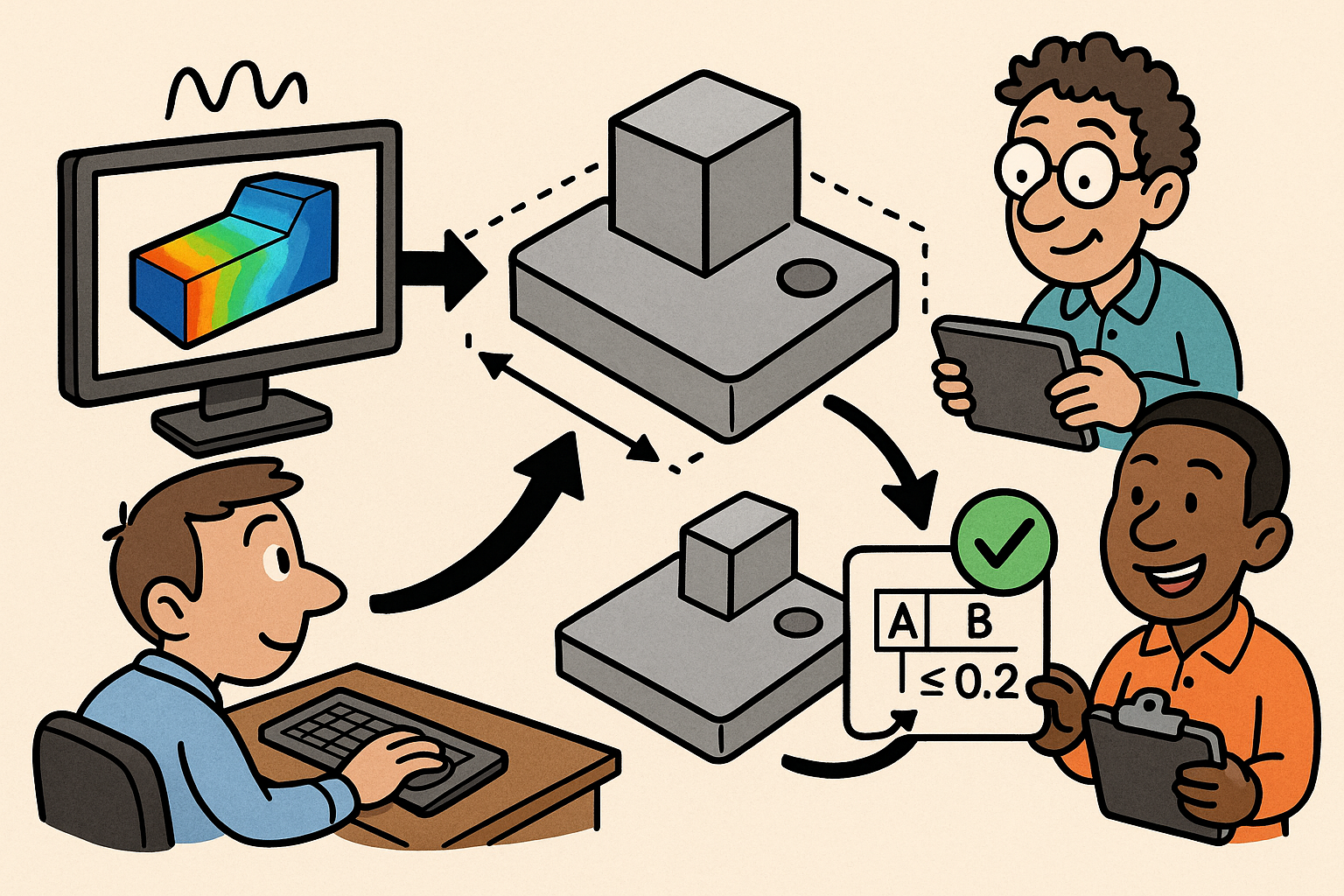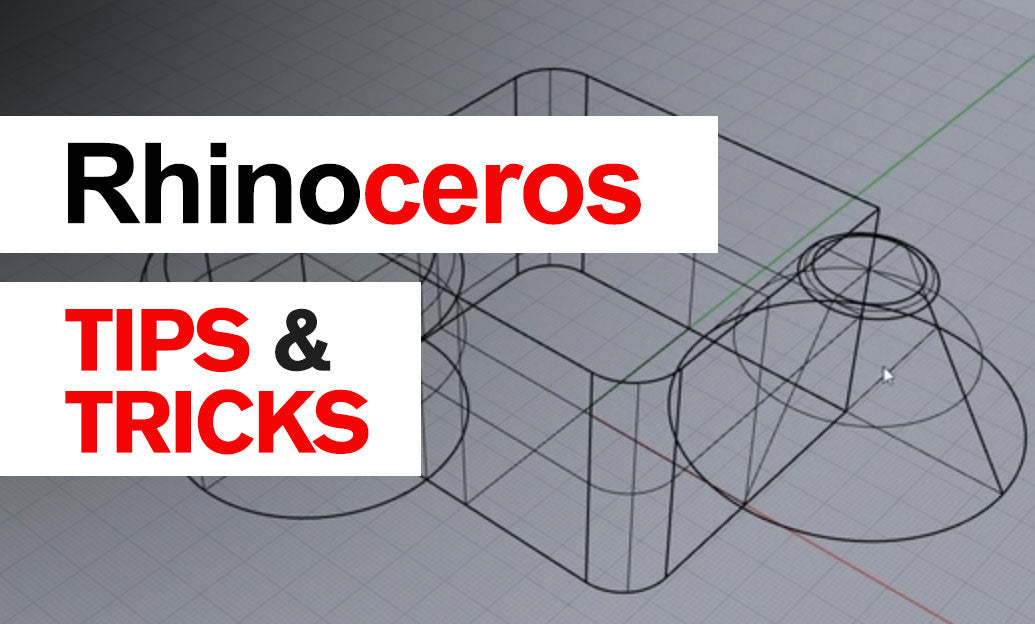Your Cart is Empty
Customer Testimonials
-
"Great customer service. The folks at Novedge were super helpful in navigating a somewhat complicated order including software upgrades and serial numbers in various stages of inactivity. They were friendly and helpful throughout the process.."
Ruben Ruckmark
"Quick & very helpful. We have been using Novedge for years and are very happy with their quick service when we need to make a purchase and excellent support resolving any issues."
Will Woodson
"Scott is the best. He reminds me about subscriptions dates, guides me in the correct direction for updates. He always responds promptly to me. He is literally the reason I continue to work with Novedge and will do so in the future."
Edward Mchugh
"Calvin Lok is “the man”. After my purchase of Sketchup 2021, he called me and provided step-by-step instructions to ease me through difficulties I was having with the setup of my new software."
Mike Borzage
Design Software History: Evolution of Design Software in Spacecraft Habitability: From Early Challenges to Modern Innovations and Future Trends in Space Exploration Design Technologies
January 16, 2025 4 min read


Introduction: The Evolution of Design Software for Spacecraft Habitability
Spacecraft habitability has become an increasingly critical factor in the success of long-duration space missions. As humanity pushes the boundaries of space exploration, ensuring the comfort and safety of astronauts is paramount. Early space missions were primarily concerned with survival, but as missions extended in duration and scope, the need for livable and functional habitats became evident. The challenges faced in early space exploration highlighted the necessity for advanced design approaches to create environments that support physical and psychological well-being. Design software has played a pivotal role in addressing these challenges, enabling engineers and designers to conceptualize, simulate, and optimize spacecraft habitats like never before. The evolution of these tools reflects the broader technological advancements and collaborative efforts within the aerospace industry, paving the way for innovative habitat designs that are essential for future missions to the Moon, Mars, and beyond.
Early Challenges and Pioneering Solutions
The inception of human space exploration saw astronauts confined to extremely limited spaces within spacecraft such as Mercury, Gemini, and Apollo. These early missions prioritized engineering constraints and mission-critical systems over crew comfort. The habitats were rudimentary, offering little more than the bare minimum required for survival. Astronauts had to endure cramped quarters with minimal amenities, which often led to physical discomfort and psychological stress. Organizations like NASA recognized these challenges but were constrained by the technological limitations of the time. The design processes relied heavily on manual drafting techniques and physical prototypes, which were time-consuming and lacked the flexibility to make rapid adjustments. Basic computer-aided design (CAD) tools began to emerge, but they were primitive compared to today's standards. Early software like SKETCHPAD, developed by Ivan Sutherland at MIT in the 1960s, laid the groundwork for interactive computer graphics and CAD systems. Although not widely used in spacecraft design at the time, these pioneering tools signaled the beginning of a shift towards digital design methodologies. The collaboration between engineers, scientists, and designers during this era set the stage for future innovations in spacecraft habitability, highlighting the need for more sophisticated design tools to address the complex requirements of human spaceflight.
The Integration of Advanced Design Tools
The transition from 2D drafting to 3D modeling marked a significant turning point in spacecraft habitat planning during the shuttle era. The advent of more powerful computers and advanced software allowed for greater precision and flexibility in design. One of the most influential programs was CATIA (Computer Aided Three-Dimensional Interactive Application), developed by Dassault Systèmes in the late 1970s. CATIA revolutionized the aerospace industry by enabling engineers to create complex 3D models of spacecraft components and assemblies. Companies like Boeing and Lockheed Martin adopted CATIA for designing various aerospace projects, including the Space Shuttle and later the International Space Station (ISS). The use of 3D modeling facilitated better visualization of spatial relationships within habitats, allowing for optimized layouts that improved functionality and crew comfort. Designers could now simulate different configurations, assess ergonomics, and identify potential issues before physical prototypes were built. This integration of advanced design tools led to more efficient collaboration among interdisciplinary teams, reducing development times and costs. The shift also enabled the incorporation of modular design principles, which were crucial for the construction and assembly of the ISS. The collaboration between international space agencies and aerospace companies during this period underscored the importance of advanced software in overcoming the complexities of spacecraft habitability design.
Contemporary Advances and Innovations
In recent decades, the rapid advancement of technology has introduced new tools that are transforming spacecraft habitat design. The advent of virtual reality (VR) and simulation software has provided designers with immersive experiences that were previously unattainable. Tools like Autodesk's Revit and Siemens NX allow for detailed modeling of interior layouts, enabling designers to optimize spaces for functionality and comfort. VR technologies facilitate virtual walkthroughs of spacecraft habitats, allowing engineers and astronauts to experience the environment before it is physically built. This immersive approach helps in identifying potential issues related to ergonomics and usability, leading to designs that better meet the needs of the crew. Additionally, the incorporation of artificial intelligence (AI)-powered design tools has started to make a significant impact. AI algorithms can process vast amounts of data to generate optimized design solutions that consider multiple variables simultaneously. These tools assist in creating custom habitat solutions that are tailored to specific mission requirements. The collaboration between software companies and aerospace organizations has been instrumental in these advancements. For instance, partnerships between NASA and private companies like SpaceX and Blue Origin have emphasized the use of cutting-edge software tools in the development of new spacecraft and habitats. These contemporary innovations are crucial for addressing the challenges of long-duration missions, such as those planned for Mars exploration, where habitat design must account for prolonged human occupancy in harsh environments.
Conclusion: The Future of Spacecraft Habitability Design Software
As humanity sets its sights on establishing a sustained presence on the Moon, Mars, and beyond, the role of design software in spacecraft habitability will become even more critical. Emerging technologies like generative design, where algorithms automatically generate optimized structures based on defined parameters, hold great promise for space habitat innovation. This approach can lead to the creation of habitats that are lightweight yet robust, essential for extraterrestrial settlements where resource efficiency is paramount. The continued development of AI and machine learning techniques will further enhance the capabilities of design software, enabling more complex simulations and predictions. International collaboration will be key in pushing the boundaries of habitability designs. The use of open-source platforms can foster greater innovation by allowing experts from around the world to contribute and share advancements. Such collaboration can accelerate the development of sustainable and comfortable habitats that support human life in space. The evolution of design software is an ongoing journey that mirrors humanity's aspirations in space exploration. As the tools become more sophisticated, they will undoubtedly play a pivotal role in ensuring that future space travelers can live and work safely and comfortably in the final frontier.
Also in Design News

Simulation-Driven Automated Tolerancing for Capability-Aware GD&T
December 10, 2025 12 min read
Read More
Rhino 3D Tip: HDRI Workflow for Realistic Lighting and Fast Look‑Dev in Rhino
December 09, 2025 2 min read
Read MoreSubscribe
Sign up to get the latest on sales, new releases and more …



